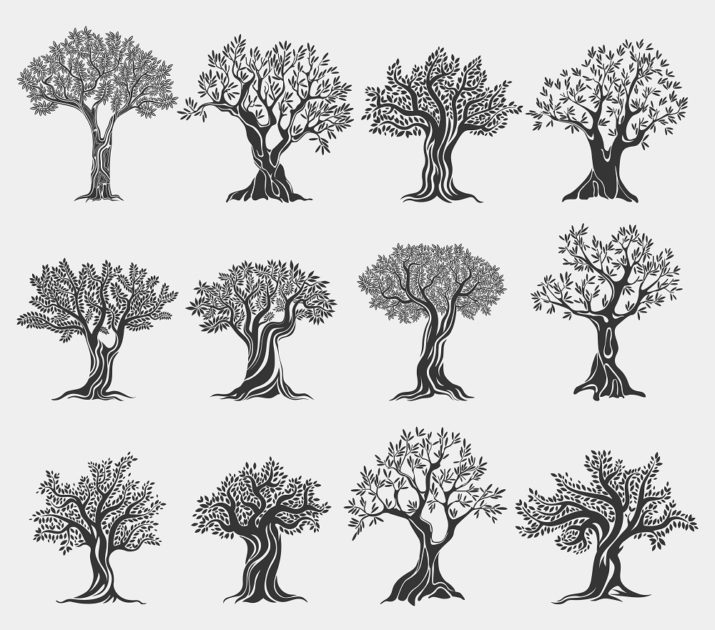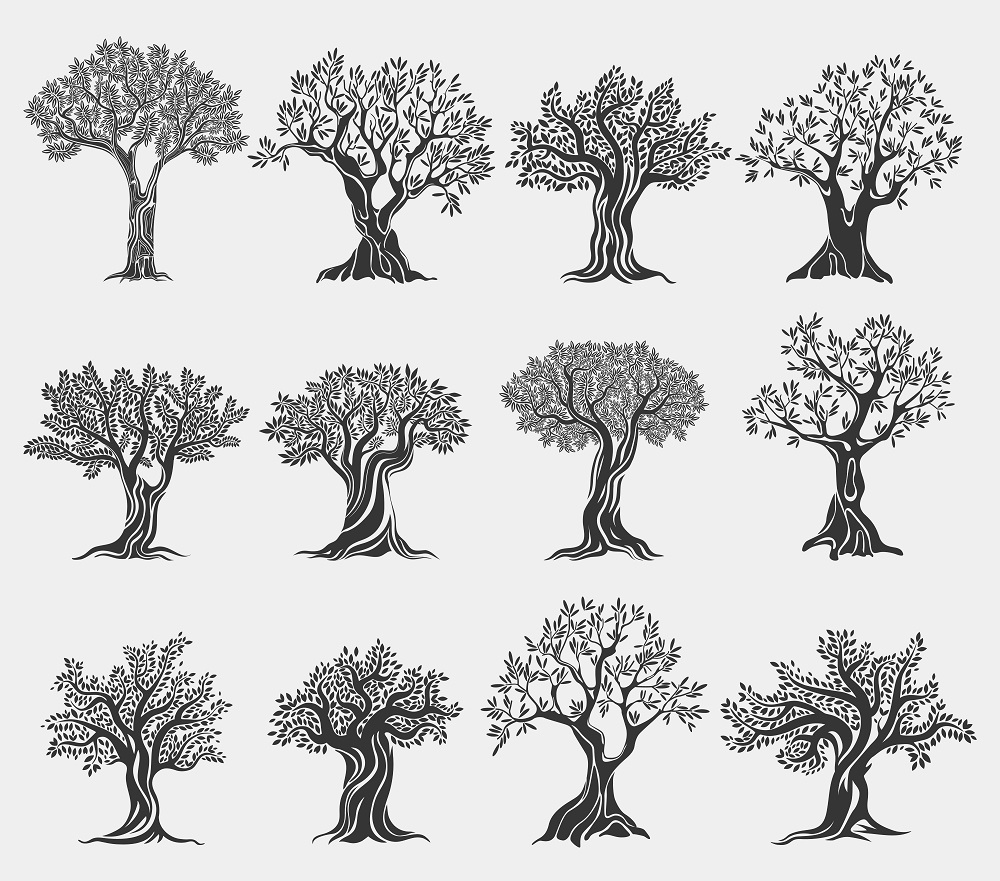

This is part of our special feature Facing the Anthropocene.
In 1832, after a decade of war, Greek nationalists’ aspirations for independence from the Ottoman Empire were finally fulfilled. In actuality, the lands contained within the borders of the newly established Kingdom of Greece were no great loss for the Ottomans, who kept not only the major port cities but also the best agricultural land of Rumelia. In 1844, the Greek politician Ioannis Kolettis famously voiced this idea as part of an irredentist vision: “The Greek kingdom is not the whole of Greece, but only a part, the smallest and poorest part.”[1] From 1832 to 1864, the Kingdom of Greece consisted of the Peloponnesian peninsula, Attica, part of Central Greece, and the Cycladic Islands. None of this territory was ideal for intensive, specialized agriculture. The Peloponnese was mountainous, and the lowland plains that existed were marshy and uncultivated. Attica and the Cyclades were arid and mountainous. Boeotia in Central Greece was a region of extremes—it was wet in winter, but it received almost no rain in the summer. Under these conditions, Greek agricultural practice continued much the same as it had for centuries: small-scale, family-based subsistence production. Farmers owned small plots of land spread across different landscapes to diversify their production. For most of the population, it was not usually possible to impose monoculture on such land, nor was it desirable to concentrate risk in this way.
Then, around 1860, something began to change. Improvements in transportation technology, particularly with the advent of steam ships, facilitated Greece’s integration into capitalist economies in Western Europe, and certain Greek agricultural products became highly demanded in foreign markets. These included olives and olive oil, silk, cotton, and above all the tiny, black raisins known as currants. As demand for these products rose, agricultural practice changed. Greek agricultural production was tied ever more closely to the tastes of European consumers, and cultivators in the regions that produced goods consumed in Europe eschewed earlier risk aversion strategies in favor of the intensive cultivation of cash crops for export.
Research in several disciplines has uncovered the effects of the incorporation of Mediterranean agricultural production into a global capitalist system in the nineteenth century. Economists and economic historians have demonstrated the ways development in Greece and the greater Mediterranean region during this time was tied to export agriculture and the ways this caused these countries to develop in a subordinate or “peripheral” position.[2] Social and economic historical scholarship has also drawn attention to the ways the commodification of Mediterranean agriculture helped to shape the political organization of these countries and contributed to the formation of national and class identities.[3] The effects of capitalist agriculture on the landscape and environment of the Mediterranean have been widely noted, but they have received less scholarly focus. Recent scholarship on the Anthropocene has brought these questions to the forefront. The spread of global capitalism in the nineteenth and twentieth centuries had significant and often permanent environmental effects in developing countries worldwide, including resource depletion, upland erosion, and the elimination of ecosystems. With respect to the changes to the landscape wrought by capitalism in Greece specifically, many questions remain, including the regional variations exhibited, the mechanisms of landscape transformation, and the long-term consequences.
Here, I present three examples of the large-scale changes made to certain landscapes in Greece in the late nineteenth century to sustain growing international demand for Mediterranean agricultural products. In the regions examined, enterprising Greek cultivators and foreign investors cleared forests, altered fluvial channels, drained wetlands, and terraced hills to devote more land to the intensive production of cash crops for export. First, I focus on two regions in the Kingdom of Greece where diverse landscapes were remade by foreign demand in the late nineteenth century—the western coast of the Peloponnese and the region of Boeotia in Central Greece. Next, I examine a general phenomenon observed throughout Greece in the nineteenth century—the construction of terraces.
Currant Colonization in the Peloponnese
In the second half of the nineteenth century, a small, black grape grown only in Greece became a highly profitable global commodity. The Black Corinth, or currant raisin, had been an export commodity since at least the fourteenth century. Yet before the nineteenth century, foreign demand for currants occupied a relatively small niche of interregional trade, and currants were only cultivated in a few places. Over time, currant cultivation intensified and abated in these places in response to changing political and economic factors, but currants did not spread beyond the confines of a relatively small region in the vicinity of the Gulf of Corinth. In the Northern Peloponnese, the towns of Corinth, Vostizza, and Patras were the places most associated with currant cultivation, and currants were also transplanted to the Ionian Islands in the sixteenth century where they similarly thrived.[4]
In the nineteenth century, an increase in Western European consumption of Mediterranean fruits created a ballooning demand for Greek currants. In Britain, the main currant-importing country, this demand was tied to an increasing consumption of pudding, or sweet desserts made with sugar and dried fruit. The publication of Charles Dickens’s A Christmas Carol in 1843 popularized the holiday ritual of serving Christmas pudding made with dried fruit and adorned with a sprig of holly. Christmas pudding became a mainstay of the season, and other puddings became popular as year-round favorites. The recipe for spotted dick, for example, which seems to date to an 1849 cookbook marketed to middle-class British housewives, calls for “Smyrna raisins” or sultanas to create the “spots.”[5] Pudding consumption rose in Britain among the lower and middle classes, and Greek currants benefitted from this general trend. Total currant consumption in England rose from 14,000 tons in 1844 to 46,000 tons in 1874. Puddings became a sign of abundance and of the happiness of the bourgeois family—Greek currants became an essential ingredient in the aspirations of the upwardly mobile British population.[6]
Because of this growing demand from the UK, the traditional currant-growing regions around the Gulf of Corinth and the nearby Ionian Islands all started to become more specialized in currant cultivation, abandoning other agricultural activities and relying instead on British pudding-eaters for their subsistence. As currant cultivation intensified, it spilled out of its centers of specialization and spread along the northern and western coasts of the Peloponnese to become a connected, monocultural region.
In the last quarter of the nineteenth century, a crisis in Western Europe caused a sudden spike in demand for Greek currants. Around 1863, the North American insect phylloxera vastatrix arrived in France aboard a steam ship. American vines had evolved an immunity to the aphid over centuries of coexistence, but phylloxera proved fatal to European vines, which had never been exposed to it. Phylloxera destroyed vineyards in sixty out of the seventy-five wine-growing provinces in France, and from 1869 to 1883, French wine production decreased by forty percent.[7] By 1881, phylloxera had also been identified in the wine regions of Germany, Italy, Spain, Portugal, and Algeria.[8] Phylloxera did not make it to the vineyards of southern Greece, and Greek cultivation rose to fill the vacuum created by vineyard collapse in Europe—in addition to the foreign demand for Greek currants for British puddings, there was now a demand for Greek currants for the raisin wine they could be used to make. By 1889-90, France imported more than 70,000 tons or about half of all of Greek currant production to convert into raisin wine for domestic consumption.[9]
As global demand for Greek currants inflated to unprecedented levels, the monocultural currant-growing region in Greece extended further, well beyond the traditional currant region around the Gulf of Corinth. Currants spread south to the region of Messenia in the Southern Peloponnese, which had never been a currant region before, and by the end of the century, the southern coast of the peninsula had displaced the north as the primary currant-cultivating region.[10] The amount of land devoted to currant vineyards in Greece more than tripled, from 15,306 ha. in 1860 to 53,000 ha. in 1885.[11]
Expansion of the currant economy entailed a transformation of the physical landscape of the region as currant vineyards extended into areas that were previously uncultivated or used for other purposes. The profitability of currant production prompted cultivators to clear orchards of centuries-old olive trees, mulberries, valonia oaks, and others to make space for new vineyards.[12] Where the extension of vineyards was constrained by a lack of arable land, local elites (e.g. merchants, lawyers, and other professionals) bought up uncultivated plots, consolidated large estates, and contracted tenant farmers to clear and plow the land and plant vineyards.[13] If uncultivated land was marshy as was often the case in the lowland plains of the Peloponnese, landowners hired workers to drain the land and dig ditches for irrigation.[14]
In the space of a few decades, foreign demand for currant raisins transformed the low-lying plains of the western coast of the Peloponnese. The landscape of orchards, marshes, pastures, uncultivated land, and diversified subsistence farms gave way to a vast extension of vineyards.
Cotton and Cereals in Central Greece
Rising demand for two other crops help to explain the environmental transformations witnessed in the region of Boeotia in Central Greece. The Industrial Revolution in Britain created an insatiable hunger for cotton to feed the textile mills of Manchester, and when the U.S. Civil War removed the American South from the global market, Britain relied more on alternative markets in the Mediterranean, particularly Egypt.[15] With its close trading ties to Britain, Greece also felt the pull of this demand. At the same time, there was a growing demand for cereals in Greece. Unlike currants and cotton, the demand for cereals was not for international trade, but to meet the food requirements of the growing population of Greece—particularly Athens, which grew in the second half of the century from a small, provincial town into a large city. As more Greek cultivators shifted to export-oriented agriculture, the need for commercial cereal production became more acute.
For most of the century, however, the stretches of plains—particularly irrigated plains—necessary to grow these crops on a commercial scale were extremely rare in the Kingdom of Greece. Before the 1880s, only 20 percent of Greek land was arable, and grains accounted for just 7 percent of the land under cultivation.[16] Central Greece was one of the few places in the kingdom where these crops could be grown in large stretches, and the districts of Livadeia and Thebes in the region of Boeotia were already the largest producers of cotton in Greece.[17]
Throughout the Mediterranean, rising demand for grain and cotton in the second half of the nineteenth century motivated landowners and entrepreneurs to undertake land improvement projects in low-lying plains, and Greece was no different.[18] One aspect of the Boeotian landscape in particular captured the imaginations of modernizers in Athens and abroad. A lake called Lake Kopaïs occupied about 100 square miles or 64,000 acres of the region’s surface. In ancient times the lake was drained into the sea, and some proposed draining the lake again to produce new land to grow cotton and cereals, effectively adding 64,000 acres to the plains of Boeotia.
In the 1880s, a joint-stock company was formed in France for the purpose of draining Lake Kopaïs. The Compagnie Française pour le dessèchement et l’exploitation du Lac Copaïs succeeded in raising the necessary capital, obtained a concession from the Greek government, and drained the lake by canalizing the lake’s tributary rivers and diverting their flow to empty into the sea. In the 1890s, a British Company, the Lake Copais Co., Ltd. was formed to purchase the Kopaïs estate from the French company, divide it into plots, and exploit the reclaimed land.[19]
The drainage works fundamentally altered the landscape of Boeotia. Rivers were rerouted, islands became hills, and a reedy and waterlogged landscape was transformed into an open plain of tilled plots. Draining the lake also destroyed the habitats of a variety of wildlife including migratory waterfowl which residents of the region hunted and sent to market in Athens and large eel that were pickled and sold throughout Greece.[20] Nearby villagers thus lost a source of food commodities as well as other resources, such as the reeds they used to construct their huts and houses and the peat they burned to heat them in the winter.[21]
The Terraced Landscape
The nineteenth-century boom in Mediterranean commercial agriculture was not just a phenomenon of low-lying plains. Cultivators throughout Greece also transformed hills and mountainous landscapes through the construction of terraces in order to sustain intensive, commercial agriculture. Terraces were built on the slopes of hills to create more surface area on which crops could be grown, and they also retained moisture in the soil which made arid climates more suitable for cultivation.
The terraced landscape expanded dramatically in the later nineteenth century. Most of the terraces seen in Greece today were constructed during this time to suit the needs of export agriculture.[22] In the western Peloponnese, terraces were sometimes used to plant currant vineyards along hillsides, as booming demand from France and the UK made this seem like a sound investment. In Messenia in the southern Peloponnese, they were also constructed to plant tree crops, especially figs.[23] On the Ottoman Aegean islands, terracing expanded to sustain intensive, commercial olive cultivation. As olive oil and the soap it was used to make became the main exports of the island of Lesvos, olive production intensified and terraces reached up into the mountains.[24]
The Legacy of the Nineteenth Century
At the close of the nineteenth century, the boom times for Greek agriculture came to an end. A solution to the phylloxera crisis was discovered, and France implemented tariffs in the 1890s to protect its recovering wine industry. This alone halved the global demand for Greek currants. Simultaneously, raisins began to be grown on a commercial scale in California which eroded the market for currants even further. The collapse of the currant economy was compounded by a debt crisis when the Greek government defaulted on foreign loans in 1893. With these events combined, Greece entered a long economic depression that lasted from 1893 to the 1910s.[25]
The landscape of Greece had been permanently altered to suit markets that had disappeared, and these changes hindered Greece’s recovery from its 1893 economic crisis. Resources that had helped to relieve rural labor surpluses in the past had been eliminated to create homogenous, capitalist agricultural landscapes, and in many cases, rural populations were too indebted to abandon or replace their crops. These changes were not easy to undo—indeed, many of them survive in the present-day landscape of Greece, including vast stretches of abandoned terraces and hundreds of deserted villages.[26] These remnants of another time are a reminder that the trajectory of development is not always linear. The Greek rural economy was at its apex in the 1880s, and it would take another century for the Greek countryside to attain these heights again.
David Idol is a PhD candidate in Modern European and Modern Greek History at the University of California, San Diego. His research focuses on social history, environmental history, the history of food and agriculture, and the history of commodities in a global perspective. His dissertation explores the social and environmental effects of foreign demand for Greek agricultural products in the nineteenth and twentieth centuries.
Photo: Set of isolated olive trees icons. Ancient mediterranean greek plant for fruit food and oil, flora with foliage and berry. | Shutterstock
References:
[1] Quoted in Richard Clogg, A Concise History of Greece (Cambridge: Cambridge University Press, 1992), 48.
[2] Petros Pizanias, Οικονομική ιστορία της Ελληνικής σταφίδας, 1851-1912 [Economic history of the Greek currant] (Athens: Idryma Erevnas kai tis Paideias Emporiki Trapezas, 1988); Reşat Kasaba, The Ottoman Empire and the World Economy (Albany, NY: State University of New York Press, 1988); Jose Morilla Critz, Alan L. Olmstead, and Paul W. Rhode, ““Horn of Plenty”: The Globalization of Mediterranean Horticulture and the Economic Development of Southern Europe, 1880–1930,” The Journal of Economic History 59, no. 2 (June 1999): 316–352; Socrates D. Petmezas, “Export-dependent Agriculture, Revenue Crisis and Agrarian Productivity Involution. The Greek Case (1860s–1930s),” Histoire & Mesure, 15:3 (2000): 321–337; Pinilla, Vicente & María-Isabel Ayuda. “ ‘Horn of Plenty Revisited’: The Globalization of Mediterranean Horticulture and the Economic Development of Spain, 1850-1935.” Working Paper, Asociación Española de Historia Económica (2006).
[3] R. Kasaba, Ç. Keyder, and F. Tabak, “Eastern Mediterranean Port Cities and Their Bourgeoisies: Merchants, Political Projects, and Nation-States,” Review (Fernand Braudel Center) 10, no. 1 (1986): 121-135; Ç. Keyder, Y. E. Özveren, and D Quataert, “Port-Cities in the Ottoman Empire: Some Theoretical and Historical Perspectives,” Review (Fernand Braudel Center) 16, no. 4 (1993): 519-558; Athanasios Gekas, “Class and Cosmopolitanism: The Historiographical Fortunes of Merchants in Eastern Mediterranean Ports,” Mediterranean Historical Review 24, no. 2 (2009): 95-114.
[4] T. A. Burlumi, History of Currants and of the Currant Vine (1909); Panayiotis Gennadios, “Ἄμπελος,” [Vine] in Λεξικόν Φυτολογικόν (Athens: Paraskeva Leoni, 1914): 58; Nikolaos Phokas-Kosmetatos, “Η καλλιέργεια της σταφίδος εν Κεφαλληνία,” [currant cultivation in Kefalonia] Παρνάσσος 19 (1972): 276.
[5] Alexis Soyer, The Modern Housewife, or Ménagère (London: Simpkin, Marshall, & Co., 1849).
[6] Nikos Bakounakis, Πάτρα, 1828–1860. Μια Ελληνική Πρωτεύουσα Στον 19ο Αιώνα [Patras, 1828–1860. A Greek capital in the 19th century] (Athens: Ekdoseis Kastanioti, 1988), 17, 145.
[7] Pizanias, Οικονομική ιστορία, 73.
[8] George Ordish, The Great Wine Blight (New York: Charles Scribner’s Sons, 1972), 170-178.
[9] T. A. Burlumi, “The Overproduction of Currants: A Novel Experiment in Protection,” The Economic Journal 9, no. 36 (Dec. 1899): 635.
[10] Alexis Franghiadis, Peasant Agriculture and Export Trade: Currant Viticulture in Southern Greece, 1830–1893 (Florence: European University Institute, unpublished dissertation, 1990), 22, 25.
[11] Franghiadis, Peasant Agriculture, 27.
[12] Franghiadis, Peasant Agriculture, 54; Elena Frangakis-Syrett, “Patras,” Review (Fernand Braudel Center) 16, no. 4. (Fall 1993): 421; Maria-Christina Hadziioannou, «Aπό την κορινθιακή σταφίδα στις ελιές Καλαμών: προϊόντα της Μεσογείου με τοπική διάσταση» [From currant raisin to kalamata olives: Mediterranean products with local dimension] in Elena Benaki, ed. «Ο δε τόπος… ελαιοφόρος.» Η παρουσία της ελιάς στην Πελοπόννησο (Athens, Greece: Politiko Idryma Omilou Peiraios, 2007), 142–143.
[13] Franghiadis, Peasant Agriculture, 180–195.
[14] Thomas Gallant, The Edinburgh History of the Greeks, 1774 to 1909: The Long Nineteenth Century (Edinburgh: Edinburgh University Press, 2014), 257–258.
[15] Roger Owen, The Middle East in the World Economy, 1800—1914, (London; New York: I.B. Tauris & Co., Ltd, 1993), 135–136.
[16] In the period from 1880–1911, grain acreage accounted for two-thirds of the total acreage under cultivation – up from 7%. This was largely made possible by the addition of Thessaly to the Kingdom of Greece in 1881. John Lampe and Marvin Jackson, Balkan Economic History, 1550-1950 (Bloomington: Indiana University Press, 1982), 166–168.
[17] Gallant, History of the Greeks, 261–264; Henri Belle, Trois Années en Grèce (Paris: Librairie Machete et Cie, 1881), 139.
[18] Faruk Tabak, The Waning of the Mediterranean 1550–1870: A Geohistorical Approach (Baltimore, MD: The Johns Hopkins University Press, 2008). 174.
[19] N. Melios and A. Papadopoulos, «Το Κωπαϊδικό Ζήτημα στο 19ο και 20ο αιώνα: μια πρώτη ιστορική προσέγγιση, » [The Kopaïs question in the 19th and 20th centuries: a first historical approach] Επετηρίς της Εταιρείας Βοιωτικών Μελετών 1, no. 2 (1988): 1159–1179.
[20] Edmond About, Greece and the Greeks of the Present Day, translated by Authority (Edinburgh: Thomas Constable and Co., 1855), 104; Edward Dodwell, A Classical and Topographical Tour Through Greece: During the Years 1801, 1805, and 1806, Vol. 1 (London: Rodwell and Martin, 1819), 237.
[21] Takis Lappas, Η Κωπαΐδα (Athens, 1984), 17; AT Grove and Oliver Rackham, The Nature of Mediterranean Europe: An Ecological History (New Haven and London: Yale University Press, 2001), 184.
[22] Peregrine Horden and Nicholas Purcell, The Corrupting Sea: A Study of Mediterranean History (Malden, MA: Blackwell Publishing, 2000), 236; Oliver Rackham and Jennifer Moody, The Making of the Cretan Landscape (Manchester; New York: Manchester University Press, 1996), 143–145.
[23] Gallant, History of the Greeks, 257; Franghiadis, Peasant Agriculture, 164–165; Stanley Aschenbrenner, Life in a Changing Greek Village: Karpofora and its Reluctant Farmers (Dubuque, Iowa: Kendall/Hunt, 1986), 12.
[24] Evridiki Sifneos, “On Entrepreneurs and Entrepreneurship of the Olive-oil Economy in the Aegean: The Case of Lesvos Island,” The Historical Review 1 (2004): 245-273; Thanasis Kizos and Maria Koulouri, “Agricultural Landscape Dynamics in the Mediterranean: Lesvos (Greece) Case Study Using Evidence from the Last Three Centuries,” Environmental Science & Policy 9, no. 4 (2006): 330-342.
[25] Socrates D. Petmezas, “Export-dependent Agriculture, Revenue Crisis and Agrarian Productivity Involution. The Greek Case (1860s–1930s),” Histoire & Mesure, 15:3 (2000), 331–336.
[26] Gallant, History of the Greeks, 267.
Published on May 2, 2017




